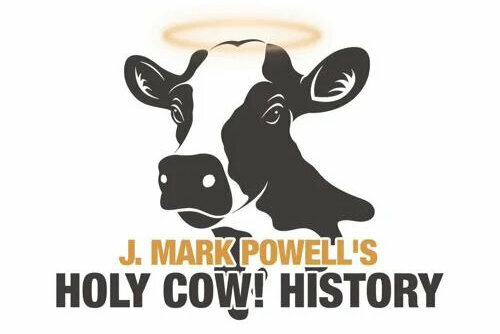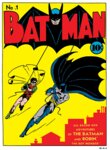Holy Hero! Robert, Anthony, the Duke and the making of an American legend
The Caped Crusader. The Dark Knight. The World’s Greatest Detective. Or just plain Batman.
This item is available in full to subscribers.
Subscribe to continue reading. Already a subscriber? Sign in
Get 50% of all subscriptions for a limited time. Subscribe today.
Please log in to continueNeed an account?
|
Holy Hero! Robert, Anthony, the Duke and the making of an American legend
The Caped Crusader. The Dark Knight. The World’s Greatest Detective.
Or just plain Batman.
Whatever you call him, he’s been delighting fans for 85 years now. Whether it’s the classic comics, the campy 1960s hit TV show or the dark movies, Americans can’t get enough of this timeless antihero.
While Batman is completely fictional, many people don’t know that his co-creator, Bill Finger, drew on a pair of larger-than-life figures when he created the character’s real-life identity in 1939.
Finger began with legendary Scottish warrior Robert the Bruce. He successfully defended his homeland from an English invasion led by King Edward I during the turbulent First War of Scottish Independence in the early 1300s. Brave, daring and ferocious in battle, he was the kind of noble figure who winds up having ballads written in his honor. He remains a national hero in Scotland to this very day. That was just the kind of inspiring figure Finger was looking for.
So Bruce would do nicely for the new character’s first name. Finger then turned his attention to finding a surname. That proved a bit trickier.
Batman’s alter ego was an upper-crust sophisticate and philanthropist, the son of murdered wealthy parents who had been to the manor born. “Being a playboy, he was a man of gentry,” Finger later recalled. He wanted a name that suggested a connection to the country’s earliest days. “I searched for a name that would suggest colonialism.” He first tried Adams and Hancock, but those didn’t work.
So Finger opened some American history books, rummaged around in the past, and found his answer in a Revolutionary War figure.
Schoolkids today can tell you about George Washington, Paul Revere, the Marquis de Lafayette and John Paul Jones (plus Benedict Arnold, but that’s another story for another time). Yet, how many know about “Mad” Antony Wayne? Daring, tenacious and quick-tempered, those qualities combined to earn him his nickname (It was “mad,” as in crazy or insane, not the angry definition).
The Chester County, Pa. native proved his military mettle by serving in the disastrous invasion of Quebec (the less said about that fiasco, the better). His reputation took a hit when his troops were surprised in the Battle of Paoli (also known as the Paoli Massacre). But he rebounded with a win in the Battle of Stony Point, which resulted in his receiving a Congressional Gold Medal in appreciation of the victory. He reached the rank of Major General and eventually served as Senior Officer of the United States Army, a kind of forerunner to today’s Chairman of the Joint Chiefs of Staff.
Finger had found the last name he was looking for. Around the same time, the old Revolutionary general’s name was also being considered for a young movie star.
Marion Morrison was a hunky University of Southern California football player who made a few extra bucks on the side by lugging scenery around movie sets. His rugged all-American looks led to small “extra” roles and then a few bit parts in films. Before he knew it, he found himself with a totally unexpected career as an actor. But there was a problem: his name.
As you would expect, he hated “Marion.” It didn’t have the tough-as-nails vibe associated with cowboys, which he was increasingly playing on the silver screen. He preferred being called by his childhood nickname of Duke, which was also the name of his dog that faithfully followed the boy everywhere, but Duke just didn’t have box office pizzazz.
Drawing from the same wellspring of inspiration that Finger had dipped into, director Raoul Walsh likewise thought “Mad” Anthony’s reputation might lend toughness. He proposed using Anthony Wayne.
Too Italian, studio executives said. So they compromised and settled on John for the first name. All this was decided without the actor even being present, much less having any input. Such was the studio system in the Golden Age of Hollywood.
And so the name John Wayne appeared in the opening credits of “Stagecoach,” the movie that launched the Duke to superstardom in 1939.
That was the same year the name Bruce Wayne appeared, along with Batman, in Detective Comics. The new character was such an instant smash hit that he got his own very comic book in 1940 and has maintained a devoted following ever since.
And he had Robert the Bruce and Mad Anthony Wayne to thank for it.
Have comments, questions, or suggestions you’d like to share with Mark? Message him at jmp.press@gmail.com.
Keywords
Batman, Bill Finger, DC ComicsOther items that may interest you










Comments
No comments on this item Please log in to comment by clicking here